Acupuncture For Sciatica: A Natural Path to Relief
Exploring its mechanisms, session expectations, and safety considerations, we navigate the path to understanding how acupuncture can be a holistic approach to managing sciatica pain.

Sciatica, characterized by the compression of the sciatic nerve, manifests as a sharp pain radiating down the back or side of the leg. Sciatica rooted in nerve compression along the spine or inflammation in the sciatic nerve.
It shows up the symptoms such as low back pain, numbness, tingling extending to the foot, and localized weakness. Originating in the low back and extending through the pelvis, the sciatic nerve's intricate pathway explains the diverse sensations experienced by those with sciatica.
In this article, we cover:
- Delve deeper into the causes of sciatica pain.
- Discover how acupuncture emerges as a natural remedy.
- How acupuncture help as an alternate therapy and how effective the treatment is.
For those seeking alternative treatments beyond medication or surgery, sciatica acupuncture has emerged as a promising option. This ancient practice, rooted in traditional Chinese medicine, offers many sufferers a natural path to relief.
Causes of Sciatic Pain
- Lumbar disc problems - degeneration, herniation
- Spinal stenosis
- Spinal vertebrae fracture
- Pregnancy
- Tight muscles (Piriformis Syndrome)
History of Chinese Acupuncture
Acupuncture traces its roots back over 2000 years to ancient China, where it emerged as a fundamental component of Traditional Chinese Medicine (TCM).
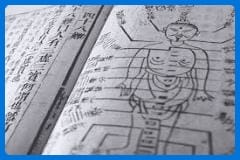
This holistic and personalized healing practice involves the insertion of sterilized fine needles into specific acupoints along the body's meridians, channels that constitute an invisible network traversing the body.
By addressing blockages in the flow of Qi, the body's vital energy, acupuncture seeks to restore balance and promote healing. Its enduring efficacy and acceptance span diverse cultural and social landscapes.
Chinese acupuncture, evolving over 2500 years, stimulates nerves to trigger various effects, including the release of natural painkillers like endorphins and serotonin.
Scientific research in the last three decades has underscored acupuncture's positive impact on multiple organ systems, leading the World Health Organization to endorse its effectiveness in treating a range of scientifically proven conditions.

Acupuncture
As a holistic approach, acupuncture not only addresses physical ailments but also aims to harmonize the mind and spirit. In this article, we delve into the essence of acupuncture, exploring its origins, principles, and the growing body of evidence supporting its efficacy in promoting overall well-being.
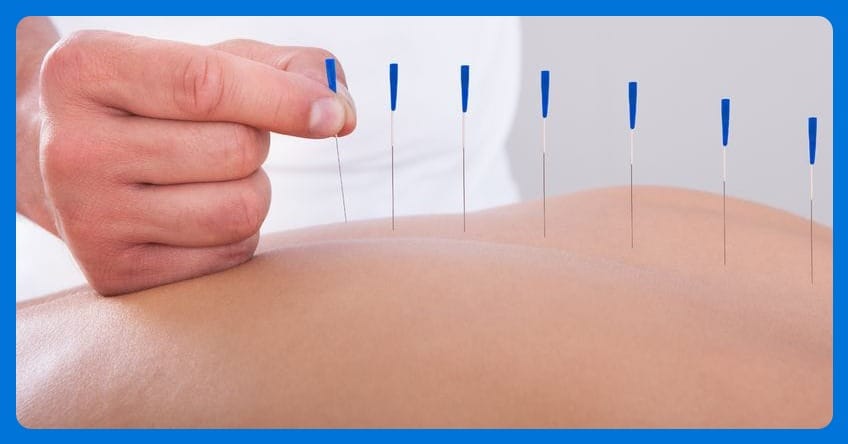
According to traditional Chinese medical theory, acupuncture points are located on meridians through which qi (vital energy) flows. Stimulating these points is believed to correct imbalances in the flow of qi through channels known as meridians.
How Acupuncture Targets Sciatica
In the context of sciatica, acupuncture aims to stimulate nerves, muscles, and connective tissue to boost the body's natural painkillers and increase blood flow.
Acupuncture can be a beneficial and holistic approach to alleviating sciatica by addressing both the symptoms and underlying causes.
During acupuncture, thin needles are strategically inserted into specific points on the body, stimulating nerves, muscles, and connective tissues. This process triggers the release of endorphins, the body's natural pain relievers, providing immediate relief from sciatic nerve discomfort.
Acupressure points, or 'acupoints,' are vital locations on meridians that influence energy flow. Massaging these points promotes free energy flow, alleviating pain. Relieve sciatica by targeting specific acupoints. Each acupoint is named based on its meridian, such as 'GB 30' for Gallbladder 30. Explore the illustrated acupressure points below for effective sciatica relief through massage
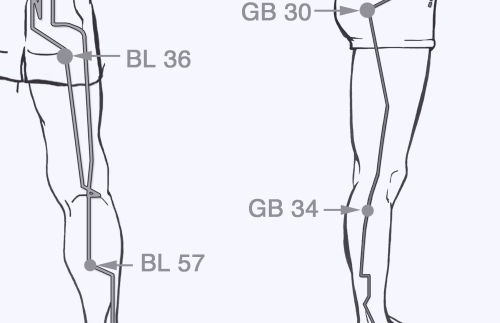
Additionally, acupuncture may enhance blood circulation and reduce inflammation in the affected area, contributing to a reduction in pain and improved mobility.
While individual responses vary, many people find acupuncture to be a valuable complementary therapy for managing sciatica, promoting overall well-being, and restoring balance to the body's energy flow.
It is essential to consult with a qualified acupuncturist to tailor the treatment to individual needs and ensure a safe and effective approach to sciatica relief.
Science Behind Acupuncture for Sciatica
Research on acupuncture for sciatica suggests that it can be an effective treatment for some people. Studies have shown that acupuncture can help relieve back pain and sciatica by stimulating the nervous system to release chemicals in the muscles, spinal cord, and brain, including natural painkillersendorphins.
It may also help to reduce inflammation, which is often a contributing factor in sciatica.
Personalizing Acupuncture Treatment
Acupuncture treatments are highly individualized. An acupuncturist will tailor the treatment to the patient's specific symptoms and underlying health conditions.
This may involve using different acupuncture points, varying the needle insertion depth, or combining acupuncture with other treatments such as cupping or moxibustion.
Combining Acupuncture with Other Therapies
Many practitioners recommend combining acupuncture with other forms of therapy to enhance its effectiveness.
This might include physical therapy, chiropractic adjustments, or massage therapy.
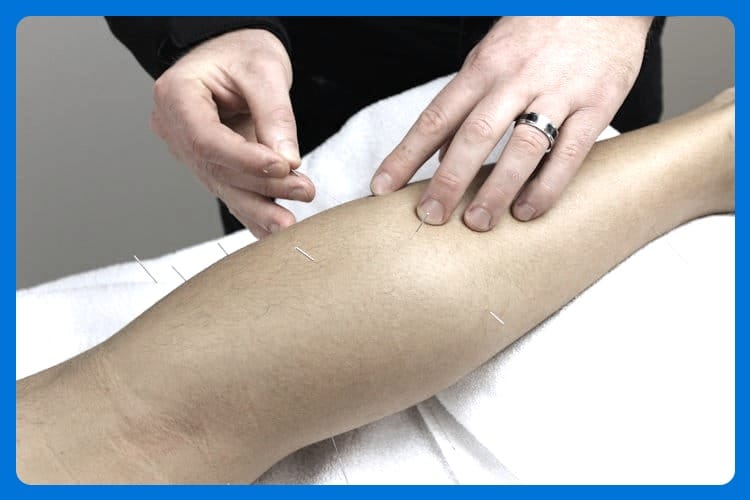
Exercise and stretching are also important for people with sciatica, as they can help to strengthen the muscles of the back and legs, improve spinal alignment, and promote better posture.
What to Expect During an Acupuncture Session?
Acupuncture for sciatica involves the gentle application of acupuncture at specific points on the body, typically resulting in a mild tingling or dull sensation that lasts around 20 to 30 minutes. Many patients express a sense of relaxation and calmness following the treatment.
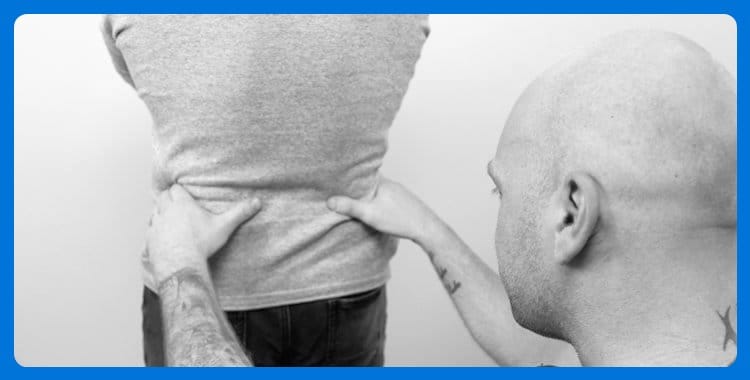
The approach is tailored to address the varied causes of sciatica, and additional therapies like Remedial Massage, Cupping Therapy, Electro-Therapy, or natural supplements may be recommended based on individual needs.
Sciatica's diverse nature requires a flexible treatment process, and patients often observe progressive symptom improvement throughout 6-12 sessions. In chronic cases, exceeding 18 sessions may be necessary for a comprehensive resolution.
Acupuncture, coupled with complementary therapies, offers a holistic approach to alleviating sciatic pain and promoting overall well-being.
Potential Side Effects & Considerations
While acupuncture is generally considered safe when performed by a certified practitioner, there are some potential side effects, such as soreness, minor bleeding, or bruising at the needle sites.
People with bleeding disorders or those taking blood thinners should discuss the risks with their healthcare provider before undergoing acupuncture.
Harness the Power of Acupuncture for Natural Healing
Unlock the potential of natural healing with acupuncture for sciatica. This ancient practice targets sciatic nerve discomfort by easing muscle tension, enhancing blood flow, and recalibrating the nervous system.
Unlike conventional medications such as NSAIDs and muscle relaxers, acupuncture offers a side-effect-free alternative. Delving into scientific findings, one systematic review highlights its superiority over NSAID treatment.
Embrace a safe and non-surgical approach to alleviate sciatica pain, with acupuncture synergizing with prescribed medications to potentially reduce dosage and mitigate side effects. Discover the holistic benefits of acupuncture in reclaiming comfort and well-being.
The Benefits of Acupuncture for Sciatica
Unlike conventional methods, acupuncture boasts a drug-free profile, eliminating concerns about dependency and side effects associated with pain medications.
The artful insertion of needles not only reduces inflammation, alleviating pressure on the sciatic nerve, but also fosters improved mobility and flexibility. By enhancing blood flow, acupuncture becomes a catalyst for healing, delivering essential nutrients to affected areas.
Moreover, its natural muscle relaxation properties aid in alleviating tense muscles, ultimately reducing nerve pressure. Beyond mere symptom management, acupuncture promotes holistic well-being, making it a transformative journey towards reclaiming a balanced and healthy lifestyle.
Acupuncture for sciatica is not merely a treatment; it's a pathway to restoring your quality of life and enabling you to rediscover the activities you cherish most.
Exercises for Sciatica
- Swimming
- Gluteal stretching
- Plank and side plank
- Clamshell
- Hip extension exercises
- Resisted hip abduction
- Leg and core strengthening
Summary
Sciatica acupuncture is a viable and natural treatment option for those suffering from sciatic pain. It works by stimulating specific points in the body to release natural painkillers and reduce inflammation. While individual experiences may vary, many have found significant relief through this ancient practice. As with any treatment, it's essential to consult with a healthcare professional and find a qualified acupuncturist to ensure the best possible outcome.
FAQ Section
Q 1: Can Acupuncture Help Relieve Sciatica Pain?
A: Acupuncture has shown promising results in relieving sciatica pain. Sciatica, stemming from the compression of the sciatic nerve, can cause sharp pain, numbness, and tingling down the leg. Acupuncture, an ancient Chinese practice, involves inserting thin needles into specific points to stimulate energy flow and promote natural healing.
Research suggests that acupuncture can effectively reduce inflammation, alleviate muscle tension, and enhance blood circulation, addressing the root causes of sciatica. Many individuals have reported significant pain relief and improved mobility after acupuncture sessions.
However, it's essential to consult with a qualified practitioner for personalized treatment. Explore our blog article to delve deeper into the science behind acupuncture and its role in naturally relieving sciatica pain.
Q 2: How Many Acupuncture Sessions are Typically Needed for Sciatica Relief?
A: The number of acupuncture sessions required for sciatica relief can vary based on individual factors such as the severity of symptoms, the root cause of sciatica, and an individual's response to treatment.
In many cases, individuals may begin to experience relief after just a few sessions. However, a more chronic or severe condition might necessitate a more extended treatment plan.
On average, a course of acupuncture for sciatica relief might involve anywhere from 6 to 12 sessions, scheduled over several weeks. Acupuncture's cumulative effects often contribute to long-term relief, but the precise number of sessions can be tailored to the unique needs of each patient.
It's crucial to consult with a qualified acupuncturist who can assess your specific condition and recommend a personalized treatment plan. Regular communication with the practitioner allows for adjustments based on progress, ensuring the most effective and targeted approach to sciatica relief through acupuncture.
Q 3: Is Acupuncture Safe for Sciatica, and Are There Any Side Effects?
A: Acupuncture is generally considered safe for treating sciatica, and side effects are typically minimal. This traditional Chinese medicine technique involves inserting thin needles into specific points on the body to stimulate energy flow and promote healing. Many individuals with sciatica find relief through acupuncture without experiencing adverse reactions.
However, as with any medical intervention, individual responses may vary. In rare cases, some people may encounter mild bruising, soreness, or bleeding at the needle insertion sites. These side effects are usually temporary and resolve quickly.
It's crucial to consult with a qualified and experienced acupuncturist for a thorough assessment before beginning treatment. They will consider your overall health, medical history, and specific sciatica symptoms to tailor the acupuncture sessions accordingly.
